
views
Prep
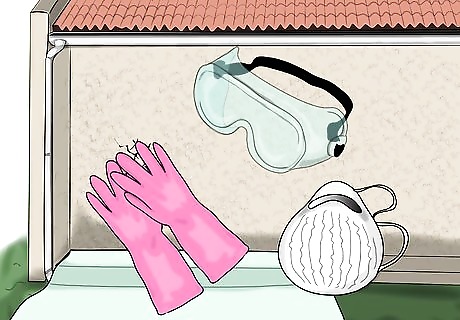
Gather safety equipment. It is highly reccomended that you wear eye protection, a dust mask, and gloves.

Gather your equipment. See the Thing's You'll Need section below.

Cover areas around the damaged Stucco. Place something along the lines of a tarp,over areas that could possibly get dust or soot on them while chopping.
Chopping and Lathing

Chop the stucco. Use a hammer and chisel to break off the damaged stucco and lath from the sheathing of the wall, but you must leave some lath around the damaged area, as the new lath will be tied to the old. The stucco should fall off fairly easily. If you wet down the wall, it will reduce the dust that comes off at this step.

Pull back the old metal lath. from the non-damaged stucco in the outside of the patch area. This is the lath previously described as important that should not be removed. Pulling it back will allow you to work it a little more comfortably.

Cut a piece of the double D tar paper. Cut it as big as the uncovered portion of the lath. Use the hammer tacker to stick the piece on the sheathing. It is best to have the new piece go behind the old tar paper at the top (so if any moisture gets inside the wall, it will run out and away from the wood) and to have the new tar paper in front of the old tar paper at the bottom (so that is any moisture gets in the wall, it will run outside, away from the wood). Use as few staples as possible because holes in the tar paper can let water in.

Seal the outside edge of the metal lath. Use the rubber membrane to seal of the outside edge of the lath. The rubber membrane may not stick well to the area being sealed off. In that case, tack a few staples in or improvise in order to keep it in place. Instead of rubber membrane, which is quite expensive, you can use a tube of Polyurethane sealer, which costs less and was used by builders for this purpose prior to the invention of rubber membrane.

Cut a piece of metal lath. Cut the piece size to fit into the patch area. The metal lath should be large enough to fit beyond where the metal lath from the good stucco on the outside edge can fit over the cut piece.

Seat the lath. Place the lath in the patch and place a few nails in that will keep it in place.
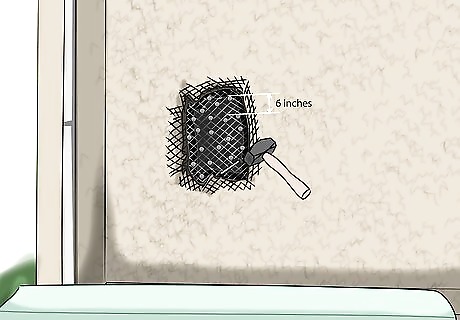
Nail in the lath. Place nails in places that will provide a good anchor to the lath. Don't worry about hitting studs because it is only a patch. The nails should be spaced about 6 inches (15.2 cm) apart.

Overlap the lath. Take the old lath that you bent outwards and bend it over the new piece of lath you installed. Place nails where the two pieces overlap.
Scratch Coat

Mix and prepare cement. Make sure it does not dry and harden.
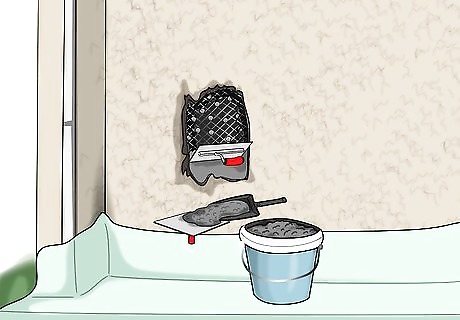
Apply the cement to the patch. Use the scoop to place some cement on your hawk. Use your trowel to take the cement off the hawk and spread it onto the wall. Skim just enough cement over the lath so that it is covered.

Scratch the patch. Use the scratcher to scratch the entire skimmed area.
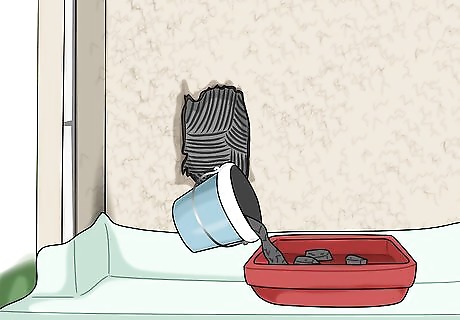
Make more cement. If your current batch is dried out, mix a new one.
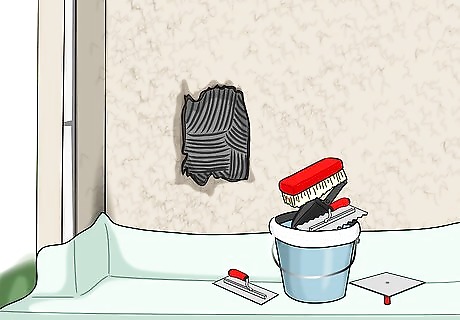
Clean your tools. Clean them so they don’t get ruined. Use a wash brush and bucket of water, or whatever else that may work.
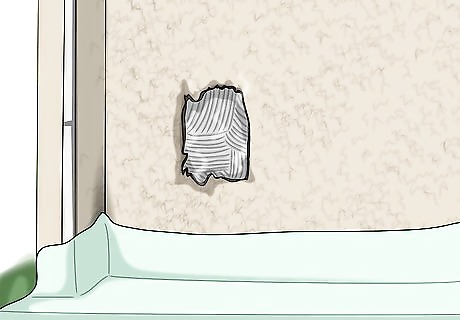
Wait for the scratch coat to dry. You will know the patch is dry when it turns from a dark grey to a light grey.
Brown Coat

Mix cement. Mix enough to fill the patch twice.
Apply cement to the patch. Scoop cement out of the bucket and place in the hawk. Use the trowel to spread the cement onto the wall. The brown coat must be level with the surrounding wall of the patch, so use enough mud to fill the patch in adequately. If the stucco sags, wait 5 minutes for the stucco to harden some and then level it again. If you wet the existing wall, it will help the new stucco to adhere to the old. Stucco does not stick to oil, mold, dust, dry, loose or very smooth surfaces.

Level the patch area. When the patch has been filled in with cement, use the darby and scrape down across the patch area. Wetting the darby makes the process work smoother. If the stucco sags, wait 5 minutes for the stucco to set some and then level it again.

Fill in any holes. If any holes exist after running the darby across the patch, throw some cement in the holes and repeat the leveling process. You must now immediately begin the next part, floating.
Floating

Rough the patch area. Use a swirling motion with the wet float to start leveling the wall. Be careful not to press too hard against the wall so that you dig into it, but use enough pressure so that you are effectively roughing up the surface of the wall.
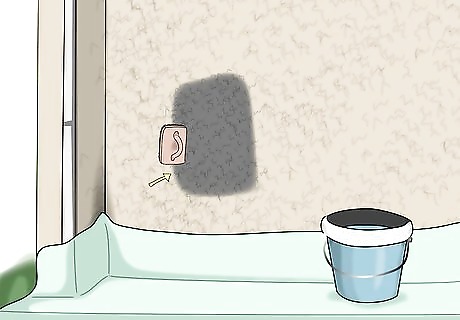
Make sure the new patch and wall are connected. Make sure the outside edge of the patch is smoothed out onto the existing wall with the float. You may apply more pressure on the outside of the patch for this purpose.
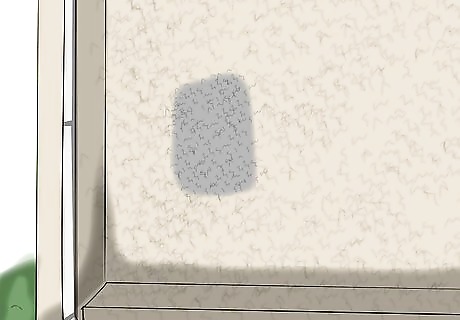
Finishing up. When the patch is roughed up and evened out with the area previously existing wall around it the job is complete. Make sure the patch cures before putting a finishing coat on.
Mixing Guide

Gather the necessary materials needed to make a batch of the cement. These materials include a bag of pre-mixed cement (with fibers), bonding agent, and water.

Gather the necessary tools. A margin trowel for scraping the edges of the bucket. An electric drill and beater for mixing the cement. A wash brush is recommended for cleaning the tools after mixing the cement.

Fill the bucket. You will want to fill it up about ¼ full with water.

Add bonding agent. You'll want to add roughly 16 ounces. On a very large area, you can just paint the bonding agent on the edges of the old stucco and not mix it into the stucco.

Fill the bucket with cement. You can now fill the rest of the bucket with the pre-mixed cement.
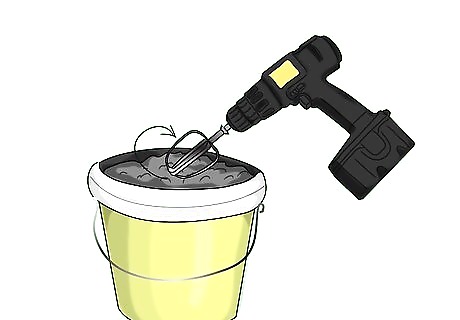
Mix the cement. Mix the bucket with the electric drill and beater until the right consistency is met. You will know the cement is at the right consistency when it is not soupy, but it keeps its form fairly well. You may need to add some water, check the cements consistency. If the stucco runs off a trowel that is held up vertically, the mixture has too much water in it.
Don't over mix the stucco or it will set faster and be harder to apply to the wall. If you are starting, you can fill the bucket with a couple of inches of water, then add a half bucket of stucco, add a couple inches more of water and let it sit for 3 minutes so the water absorbs into the stucco. This will permit you to mix the stucco less so that you can work with it longer.




















Comments
0 comment